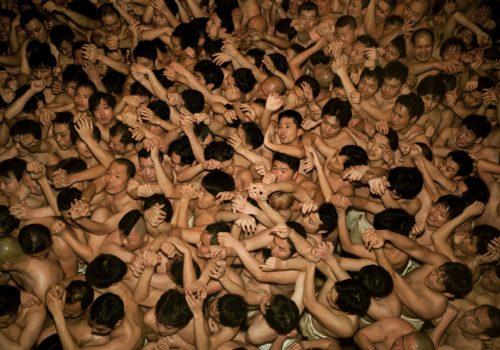Ihiro Hamayi is the director of the T3 Photo Festival, who organizes the first photographic fair devoted to Asian photography this year.
Dear Ihiro, tell us more about you and how you created the T3 Photo Festival Tokyo.
To begin with, I wanted to be an artist myself, just like many curators. But I realized during university in San Diego (US) it wasn’t my path. I came back to Tokyo, started working for PHAT Magazine, first in advertising. As I was speaking English (and Japanese, of course) and understood how artists thought and sometimes struggled, I could help them promoting their works. I felt I could be the bridge between Japanese artists and the outside world. During much of the same period, Japanese company Ricoh called me to write a proposal for their first photography gallery in Ginza where I worked as external director for four years. I learnt how to select artists and curate their shows, and, of course, I met a lot of artists and friends in the art scene. One of my first exhibition was a show with Alex Prager, followed by a show with Alejandro Chaskielberg, who won the Sony Award in 2010.
Then, PHAT Magazine came back to me offering me to be its chief editor. It was in 2011. Japan was destroyed by the earthquake, a lot of people lost their lives, the economy went down, we obviously lost some sponsors while the magazine was challenged by the rise of mobile cameras (iPhones) and social networks. We needed to invent new forms of defending the artists.
How and when was the T3 Photo Festival Tokyo created?
In 2011 and 2012, I went to Photoville in New York and most important of all, to Beijing where I met artists, curators, directors, and amongst them Ronrong and Inri. I often asked the Western people I met why they were in Beijing and many answered me: “this is the only place I can find what’s happening in Asia.” But Asia is pretty big! Unarguably Japan has long history and devotion to photography. We needed that platform, here in Japan. I understood that new talents and established photographers needed new forms of communication and an established moment that would differ from the rise of social media. A moment that would gather the artists, the specialist and above all, the diverse publics.
Of course, in Japan we have great museums devoted to photography, like the TOP Museum (Tokyo Photographic Art Museum) and national collections that have constantly acquired photography. There are strong galleries but we missed a special momentum that would unite the artists, the institutions, the galleries and the brands together.
The festival was previously located in Ueno Park before moving to Kyobashi. Why?
Before being in Ueno, the festival began in Jōnan Jima but was too far away to attract a large audience. We then move to Ueno and proposed an open-air festival. Ueno is the heart of the national museums in Tokyo and a very popular site in our town, with around 200 000 people coming to the park. It seemed the perfect place but it was somehow too big for our structure. We decided to start the festival from the 72 Gallery, which is located in Kyobashi (nearby Ginza), a central, condensed and very dynamic neighbourhood of Tokyo. While it is now mostly a place of business with its skyscrapers, it has a long history with art. Edo-Kabuki, a very popular art was founded in this area, while the Ukiyoe artist Hiroshige Utagawa had his workshops and lived here and a lot of Japanese painters and craftsmen worked closely with the Kōkyo Imperial palace and the central power.
I believe the festival will create a new dynamic for Japanese photography. It will, of course, enlighten the traditional photographic culture here, and will defend the new emergence. We already closely work with the National Film Archive of Japan and the TOP Museum. Next year, the latter will be celebrating its 30th anniversary. We hope to create other collaborations with the museums here.
The festival takes place in various spaces in Yaesu and Kyobashi this year where the fair is too, around the 72 Gallery but also in pastries shop, in the stairs of a pub, on construction sites barriers…
This neighbourhood is now fully in development. There are lots of spaces available. And I still believe it’s a great opportunity for photography to be in public spaces as in exhibition spaces.
More information
















